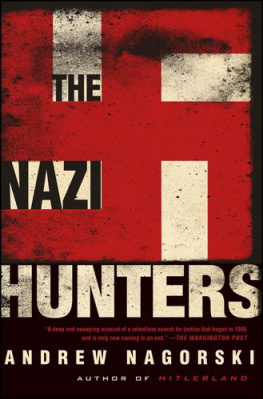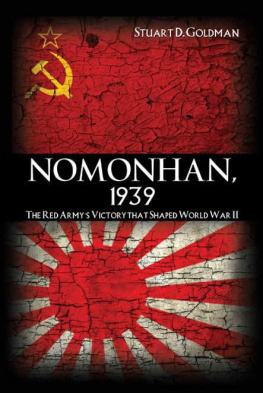Charles River Editors was founded by Harvard and MIT alumni to provide superior editing and original writing services, with the expertise to create digital content for publishers across a vast range of subject matter. In addition to providing original digital content for third party publishers, Charles River Editors republishes civilizations greatest literary works, bringing them to a new generation via ebooks.
Sign up here to receive updates about free books as we publish them , and v isit Our Kindle Author Page to browse todays free promotions and our most recently published Kindle titles.
Introduction

Picture of a German bombardment of Stalingrad.
The Battle of Stalingrad
Approaching this place, soldiers used to say: We are entering hell. And after spending one or two days here, they say: No, this isn't hell, this is ten times worse than hell. Soviet general Vasily Chuikov
World War II was fought on a scale unlike anything before or since in human history, and the unfathomable casualty counts are attributable in large measure to the carnage inflicted between Nazi Germany and the Soviet Union during Hitlers invasion of Russia and Stalins desperate defense. The invasion came in 1941 following a nonaggression pact signed between the two in 1939, which allowed Hitler to focus his attention on the west without having to worry about an attack from the eastern front. While Germany was focusing on the west, the Soviet Union sent large contingents of troops to the border region between the two countries, and Stalins plan to take territory in Poland and the Baltic States angered Hitler. By 1940, Hitler viewed Stalin as a major threat and had made the decision to invade Russia: In the course of this contest, Russia must be disposed of...Spring 1941. The quicker we smash Russia the better. (Hoyt, p. 17)
The surprise achieved by the German invasion in 1941 allowed their armies to advance rapidly across an incredibly wide front, but once winter set in, the two sides had to dig in and brace for German sieges of Russian cities. In the spring of 1942, Germany once more made inroads toward Stalingrad, Stalins own pet city. Not surprisingly, he ordered that it be held no matter what. There was more than vanity at stake though. Stalingrad was all that stood between Hitler and Moscow. It also was the last major obstacle to the Russian oil fields in the Caucuses which Stalin needed and Hitler coveted. If the city fell, so would the rest of the country, and Hitler would have an invaluable resource to fuel his armies.
Stalin chose his best general, Marshal Georgy Zhukov, to lead the more than one million soldiers who would stand between Germany and the precious city. Stalin made sure that they were continually supplied with every sort of military paraphernalia available, from tanks and aircraft to guns and ammunition. Zhukov, who had never been defeated, held the line until November 19, when Stalin ordered him to attack the now weary Germans. In a carefully planned pincer maneuver, the Soviet armies attacked from both the north and the south, carefully encircling the German troops until the German general, Friedrich Paulus, begged Hitler to allow him to withdraw. But by then the Fuhrer was obsessed with capturing the city that he refused his generals pleas, so the Germans attempted to hold on, losing thousands of additional men without taking the city. When the remains of the German 6 th Army finally surrendered in February 1943, they had lost about 1.5 million men and over 6,000 tanks and aircraft in a little more than 5 months of fighting. The Soviets lost a staggering number as well, with estimates of over 1 million casualties.
Altogether, the Battle of Stalingrad was the deadliest battle in the history of warfare, and the Soviets decisive victory there is considered one of the biggest turning points in the entire war, and certainly in the European theater. Over the next two years, the German gains in Russia were steadily reversed, and the Red Army eventually began pushing west towards Berlin. Fittingly, the importance of Stalingrad was commemorated in several ways, from Churchill presenting Stalin with a Sword of Stalingrad to the Russians decision not to rebuild parts of the battle scarred city as a reminder of what happened there.
Stalingrad and Leningrad comprehensively covers the entire military situation that led up to the battle, analyzes the decisions made by the battles most important leaders, and explains the aftermath of the Soviet victory. Along with a bibliography and pictures of important people and places, you will learn about the Battle of Stalingrad like you never have before.

Leningrad residents collecting water during the siege.
The Siege of Leningrad (1941-1944)
The city is dead. There is no electricity, no trams. Warm rooms are rare. No water. Almost the only form of transport is sleds, carrying corpses in plain coffins, covered with rags or half clothed. Daily six to eight thousand die. The city is dying as it has lived for the last half year - clenching its teeth." - Nikolai Markevichs diary entry on January 24, 1942.
28 December 1941 at 12.30 a.m. Zhenya died. 25 January 1942 at 3 p.m. Granny died. 17 March at 5 a.m. Lyoka died. 13 April at 2 a.m. Uncle Vasya died. 10 May at 4 p.m. Uncle Lyosha died. 13 May at 7.30 a.m. Mama died. The Savichevs are dead. Everyone is dead. Only Tanya is left. Diary entries by Tanya Savicheva, an 11 year old girl who died of tuberculosis months after the siege.
When the Soviet-Nazi non-aggression pact of 1939 was broken by a German offensive against Russia, the surprised Red Army was quickly driven eastward away from the border with Poland, and Russian forces found themselves in a desperate attempt to defend major Russian cities from the Germany invaders. Leningrad, which had a population of roughly three million on the eve of the German attack, was one of the victims of the Russian unpreparedness, but once the siege began in the fall of 1941, the Soviets knew they were in a desperate struggle to the death. In fact, the Russians wouldnt have even been given a chance to surrender if they had wanted to, because the orders to the German forces instructed them to completely raze the city: "After the defeat of Soviet Russia there can be no interest in the continued existence of this large urban centerFollowing the city's encirclement, requests for surrender negotiations shall be denied, since the problem of relocating and feeding the population cannot and should not be solved by us. In this war for our very existence, we can have no interest in maintaining even a part of this very large urban population."
The Russians managed to barely supply the encircled city through a small corridor of land that connected to Lake Ladoga, with transports crossing the lake when it froze over in winter. This euphemistically became known as the Road of Life, but the precarious conditions and the Luftwaffe also left many referring to it as the Road of Death. And even though the Nazis never managed to entirely cut off that supply route, during the nearly 900 day siege, which lasted from September 1941 - January 1944, at least 750,000 civilians starved to death, one out of every three or four members of the pre-siege population. The siege was so devastating that estimates of civilian dead from all causes were estimated at over a million. To put the massive death toll of the siege of Leningrad in perspective, roughly 35 times more civilians died at Leningrad than in the London Blitz, and 4 times more died than in the bombings of Nagasaki and Hiroshima combined.




















